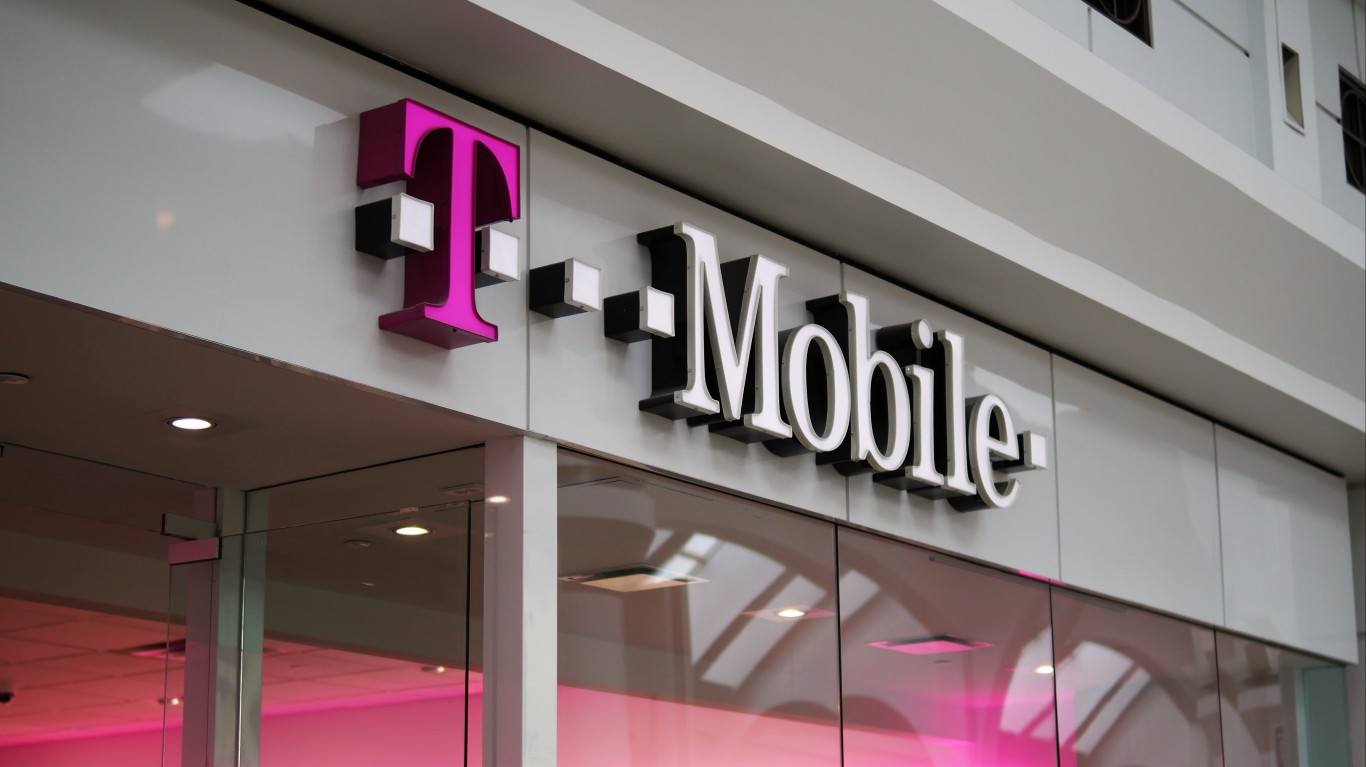
The race to build 5G wireless networks has heated up over the past year or so as smartphone vendors have begun selling compatible devices and internet service providers (ISPs) have offered 5G service in many U.S. cities. AT&T Inc. (NYSE: T) has been in the thick of the competition for available spectrum over which to provide the high-speed service. The company is betting that the AT&T stock price will get a large enough boost from 5G to keep paying its generous dividend.
In March, AT&T paid nearly $2.4 billion through its FiberTower Spectrum Holdings subsidiary for an additional 3,267 5G spectrum licenses. Competitor Verizon Communications Inc. (NYSE: VZ) spent $3.4 billion for 4,940 licenses, while T-Mobile US Inc. (NASDAQ: TMUS) paid $931.6 million for 2,384 licenses.
While spectrum licenses may be a bit too far in the weeds to interest consumers, investors need to pay attention to the broad strokes because what the three major U.S. wireless companies do in these spectrum auctions can affect their streaming services and, dearest of all to Wall Street, their dividends.
The big story in 5G this year, of course, is the possible release of a 5G-compatible iPhone from Apple Inc. (NASDAQ: AAPL). If the most valuable company listed on U.S. stock markets introduces a new iPhone, analysts expect pent-up demand for 5G phones to soar. If that happens, demand for 5G service also will skyrocket and the ISPs need to be ready.
What’s Next for 5G Providers
The recent Federal Communications Commission (FCC) auction raised a total of just $7.6 billion for the sale of more than 14,000 licenses. Analysts who watch these issues closely saw that as a tepid response. According to a report at Fierce Wireless, the nationwide price per MHz-POP for certain blocks in Auction 103 ended at $0.001099. MHz-POP is a metric representing one megahertz of bandwidth passing one person in a specific coverage area.
Another, somewhat controversial spectrum auction is due before the end of the year. The FCC voted in February to release 280 MHz of C-band spectrum for 5G wireless connectivity. That bandwidth has been licensed by non-U.S. satellite companies, who initially wanted to auction off the spectrum themselves and keep the proceeds. The FCC was not amused.
Instead, the U.S. government voted to pay the license-holders $15 billion to reacquire the licenses and auction them off again. That implies that the FCC expects to collect significantly more than $15 billion when it auctions off the C-band spectrum.
The February decision was decided on a three-to-two party-line vote. Chair Ajit Pai and the Republican members cited the need for speed in reacquiring the rights to the C-band spectrum, and the two Democrats questioned the commission’s legal standing to make such a deal. Republican Senator John Kennedy commented in a tweet: “Shelling out billions for airwaves we already own is no way to handle taxpayer money—especially when taxpayers want those dollars to support rural broadband.”
What AT&T Is Doing Now With Its New Spectrum
AT&T had already offered limited 5G+ service on a higher bandwidth before the recent auction was closed under a temporary license from the FCC. The company also had requested to test the same bandwidth in several cities. Now that the auction is completed, AT&T plans immediately to convert all its temporary licenses to the newly acquired spectrum and expand the available spectrum to meet demand.
That may not turn out to be just the paper shuffling it sounds like. AT&T’s 5G+ is not really 5G, and the company has come under fire for making (or at least implying) the claims.
AT&T launched its 5G+ network late in 2018, but it didn’t give consumers with some Samsung models access until this past March. When the service was tested in New York City in March, the network recorded average download speeds of 540 Mbps, with a maximum of 1.2Gbps.
Experts believe that converting from the ersatz 5G+ technology to the 5G would be relatively straightforward and quick to achieve.
Is a 5G iPhone Coming This Fall?
Wedbush analyst Dan Ives believes that the expected 5G-compatible iPhone is creating a “perfect storm of demand” for Apple. In his view, 350 million of the company’s 925 million iPhone customers present an upgrade opportunity. Apple already sells about 200 million iPhones annually, so the opportunity Ives sees is not small.
Apple analysts Gene Munster and Will Thompson at Loup Ventures expect a 5G iPhone this fall but say that “iPhone 5G’s breakout years will be FY22-FY24, given what will be modest global coverage upon launch.” Fiscal year 2022 for Apple begins in February 2021.
One of the most quoted Apple analysts of all, Ming-Chi Kuo of TF International, believes that the Pro models with support for both sub-6GHz and mmWave 5G signals will be delayed as Apple makes design changes to the antenna to accommodate the faster 5G mmWave signals. Kuo notes that the new iPhones will only work with the sub-6GHz version of 5G. Kuo also says that Apple will begin volume production of the new iPhones in July.
Apple could announce the 5G iPhone later this year but not make it available for shipment until next year. The company has followed that path before, but it seems unlikely in this case because everyone knows the switchover to 5G devices is coming and phones lacking that compatibility will not fetch premium prices from consumers. That’s Apple’s target demographic.
The spectrum AT&T and its competitors acquired in March is all so-called mmWave spectrum, and that is what the FCC plans to auction off once the agency pays off the foreign satellite companies that currently hold rights to that spectrum.
Last Friday, AT&T announced that it had begun deploying a new network technology known as dynamic spectrum sharing (DSS) that could expand its ability to offer 5G-like service to 120 million customers. DSS enables the company to use its existing 4G LTE spectrum to power its budding 5G network. AT&T calls the mixed service “5GE.”
5GE service is only available on the updated LG V60 ThinQ 5G, Samsung Galaxy Note 10 Plus 5G and Samsung Galaxy S20 line of 5G phones.
Find a Qualified Financial Advisor (Sponsor)
Finding a qualified financial advisor doesn’t have to be hard. SmartAsset’s free tool matches you with up to 3 fiduciary financial advisors in your area in 5 minutes. Each advisor has been vetted by SmartAsset and is held to a fiduciary standard to act in your best interests. If you’re ready to be matched with local advisors that can help you achieve your financial goals, get started now.
Thank you for reading! Have some feedback for us?
Contact the 24/7 Wall St. editorial team.


